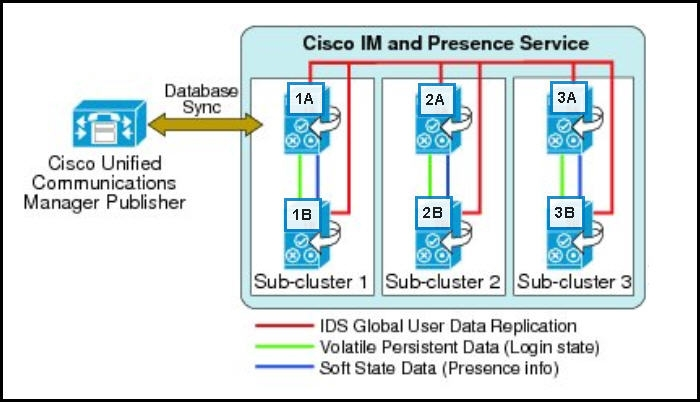Question 237 of 490 from exam 400-051: CCIE Collaboration
Question
Refer to the exhibit.

In this high-availability Cisco IM and Presence deployment with three subclusters, the first user is assigned to server 1A; the second user is assigned to server 2A; and the third user is assigned to server 3A.
Assume that Cisco IM and Presence is set to active-active mode.
To which server will the fourth user be automatically assigned?
Answers
Explanations
Click on the arrows to vote for the correct answer
A. B. C. D. E.C.
You can achieve a balanced mode High Availability deployment by evenly balancing users across all nodes in the subcluster, but only using up to 35% of the CPU of each IM and Presence node.
The balanced mode High Availability deployment option in a redundant mode supports up to fifteen thousand users per cluster.
For example, if you have six IM and Presence nodes in your deployment, and fifteen thousand users, you assign 2.5 thousand users to each IM and Presence node.
When you use the balanced mode High Availability deployment option in a redundant mode, as compared to a non-redundant mode, only half the number of users are assigned to each node.
However, if one node fails, the other node will handle the full load of the additional 50% of users in the subcluster, even at peak traffic.
In order to support this failover protection, you must turn on High Availability in each of the subclusters in your deployment.